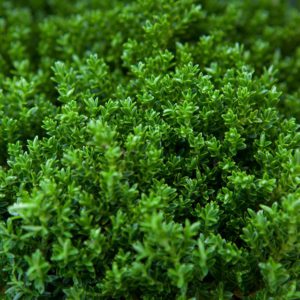Epilobium canum (California Fuchsia)
€15.00
Frequently Bought Together



Description
Epilobium canum (California Fuchsia)
Quick Facts
- Common Name: California Fuchsia, Hummingbird Trumpet, Zauschneria
- Botanical Name: Epilobium canum
- Plant Type: Herbaceous perennial
- Mature Height: 30-60cm
- Mature Spread: 60-90cm
- Flowering Period: July-October
- Flower Colour: Brilliant orange-red tubular flowers
- Foliage: Narrow, grey-green, slightly fuzzy leaves
- Hardiness: RHS H4 (hardy in most of UK and Ireland, may need protection in cold areas)
- Soil Requirements: Well-drained, sandy or gravelly soil, drought-tolerant
- Aspect: Full sun
- Maintenance: Low
Description
Like flickering flames dancing across the autumn garden, Epilobium canum ignites Irish borders with its spectacular display of fiery orange-red tubular flowers that seem to glow with inner light against silvery foliage. This remarkable perennial brings a touch of Californian sunshine to our temperate climate, creating dramatic late-season colour when many other plants are beginning their retreat into winter dormancy.
The plant’s spreading habit creates cascading mats of narrow, grey-green leaves that provide the perfect backdrop for the succession of trumpet-shaped blooms that emerge from midsummer onwards. Each flower, perfectly formed like a miniature fuchsia, attracts butterflies and beneficial insects, creating a living tapestry of movement and colour that extends the garden’s appeal well into autumn’s embrace.
Originally native to the western United States, this adaptable perennial has found favour in Irish gardens where its drought tolerance and extended flowering period make it invaluable for challenging sunny spots. Despite its exotic appearance, California Fuchsia proves surprisingly hardy in our climate, particularly when provided with the excellent drainage it craves and protection from excessive winter moisture.
In Irish garden design, Epilobium canum excels in gravel gardens, rock gardens, and Mediterranean-style plantings, pairing beautifully with ornamental grasses like Stipa tenuissima, silver-leaved artemisia, and other drought-tolerant perennials. Its trailing habit makes it perfect for cascading over walls, filling gaps in paving, or providing ground cover on sunny slopes where its vibrant flowers create stunning autumn displays.
Caragh Garden Notebook
Plant in late spring after the last frost, spacing 45-60cm apart in very well-drained soil. In Ireland’s wetter climate, excellent drainage is crucial – incorporate plenty of grit or sharp sand into heavy soils, or consider raised beds and gravel gardens for optimal growing conditions. Container cultivation works exceptionally well using a gritty, free-draining compost mix.
Thrives in pH 6.0-7.5 and requires full sun to flower well. Choose the warmest, most sheltered position in your garden, ideally against a south-facing wall or in a sunny courtyard. Avoid areas that remain wet in winter, as this can cause root rot in our climate.
Deadhead spent flowers regularly to encourage continuous blooming throughout the season. Cut back to ground level in late autumn after flowering has finished, leaving just a few centimetres of stem. In colder areas, delay cutting back until spring and provide winter protection with a dry mulch of grit or bracken.
Divide established clumps every 3-4 years in spring to maintain vigour and prevent overcrowding. The plant spreads by underground runners, making division straightforward. Water newly planted divisions regularly until established, then reduce watering as the plant is remarkably drought-tolerant once settled.
In exposed locations or colder parts of Ireland, provide winter protection by covering the crown with a cloche or fleece, ensuring good ventilation to prevent fungal problems. Avoid overwatering during the growing season, as this can reduce flowering and make plants more susceptible to winter damage.





